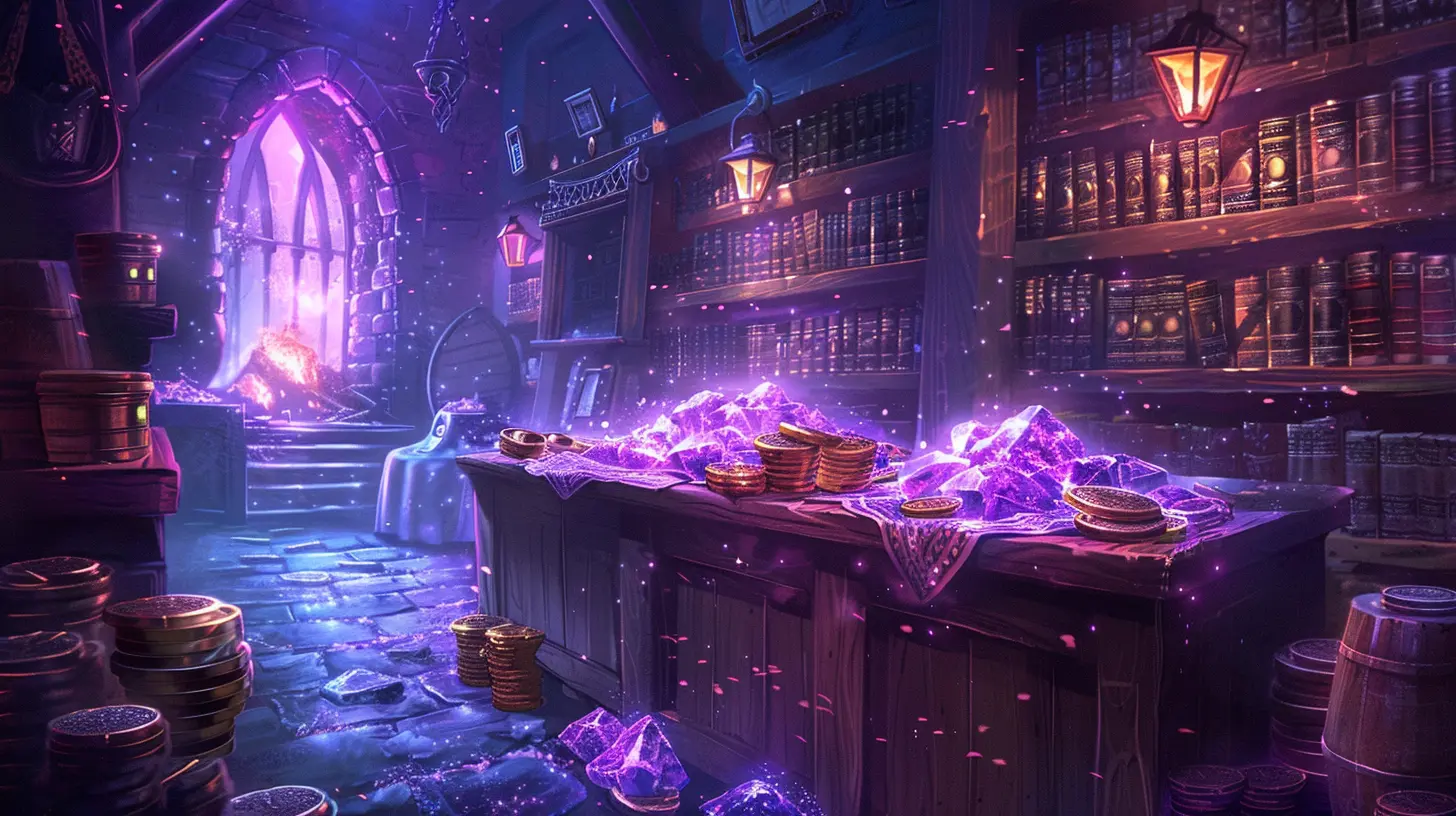How To Make Smart Decisions with In-Game Purchases
16 June 2025
Let’s face it—we’ve all been there. You’re in the middle of a heated gaming session, your character's grinding hard, and boom! A shiny offer pops up on your screen. It's promising exclusive gear, faster level-ups, or those elusive skins you've drooled over for weeks. Tempting, right? But before you hit that “Buy Now” button, hold up.
In-game purchases can be a double-edged sword. Sure, they can enhance your experience and give you a killer edge, but they can also drain your wallet faster than a boss fight wipes your party. So how do you make smart decisions with in-game purchases without falling into a spending rabbit hole?
Let’s break it down, piece by piece, and get real about how to make smarter choices when it comes to microtransactions.
What Are In-Game Purchases, Really?
Let’s start with the basics—what do we even mean by in-game purchases?Simply put, in-game purchases (a.k.a. microtransactions) are small buys you make while playing a game. They could be cosmetic items like skins or avatars, essential upgrades like weapons or power-ups, or even access to extra levels or characters. You’ll find them in free-to-play mobile games, AAA titles, and everything in between.
There are typically a few categories:
- Cosmetics: Skins, emotes, outfits, etc.
- Convenience: Speeding up progress or reducing grind time.
- Content Unlocks: Bonus missions, characters, or storylines.
- Loot Boxes: Randomized chances at rewards (think digital gacha machines).
Sounds harmless, right? But without a plan, these tiny purchases can stack up into a serious dent in your bank account.
Why We’re Drawn to In-Game Purchases
Before we point fingers or feel guilty, let’s unpack something important—it’s completely normal to want to spend money in your favorite game. Developers often create these systems to lure us in. After all, games are designed to be exciting, fast-paced, and engaging.Here’s why we fall for them:
- FOMO (Fear Of Missing Out): Limited-time offers ring the alarm bells. “Get this exclusive skin before it’s gone forever!” Who wouldn’t panic just a little?
- Peer Pressure: When everyone's flaunting their new gear, it’s hard not to feel left out.
- Instant Gratification: Let’s be real—waiting is hard. Why grind for 20 hours when you can unlock something now?
- Psychological Triggers: Bright colors, reward notifications, satisfying animations—they’re all designed to push your purchase buttons.
But awareness is the first step. Once you understand these triggers, you’re way more equipped to make smart decisions.
Smart In-Game Spending Starts with a Plan
Alright, now that we know what we’re up against, let’s talk strategy.1. Set a Gaming Budget
Just like you budget for Netflix or your favorite snacks, make room for gaming. Decide how much you’re comfortable spending on in-game items per month or per game.Think of it like treating yourself once in a while, not every time you log in.
> Pro tip: Use prepaid cards or set up a separate payment method to avoid over-spending.
2. Ask Yourself: “Is This Worth It?”
Whenever you're about to buy something, pause and ask a couple of questions:- Will this purchase improve my experience long term?
- Is it just cosmetic, or does it offer real gameplay value?
- Am I buying it because I want it, or because I feel pressured?
If the answer involves pressure or short-term dopamine, maybe it’s worth waiting.
3. Wait 24 Hours Before Buying
Impulse kills smart decisions. So when you're tempted to buy, just wait a day. Chances are, the urgency will fade and you’ll see the offer for what it is—either a good deal or a clever trap.
Think “Value” Over “Shiny”
Let’s be honest: flashy graphics and epic loot are cool—but do they really change how much you enjoy the game?When it comes to spending smartly, think long game.
Prioritize Functionality
Does this upgrade help you progress more efficiently? For example, unlocking a new character with unique abilities might offer more utility than a sparkly bow.Don’t Fall for Exclusivity Hype
Just because something is “limited edition” doesn’t mean it’s essential. Ask yourself, would you still want it if it weren’t temporary?Avoid Random-Based Mechanics
Loot boxes and gacha systems are like rolling dice. You might win, but you might also lose—badly. If you're considering a purchase based on chance, think twice or at least set a strict personal limit.Family-Friendly Spending: Tips for Parents and Young Gamers
In-game purchases can get extra tricky for kids and teens. If you’re a parent or a younger gamer yourself, here’s the game plan:- Parental Controls Are Your Best Friend: Most platforms let you limit or approve spending.
- Talk About Digital Money: Kids don’t always connect in-game currency with real-world dollars.
- Encourage Earning Systems: Set up chores or tasks in exchange for small gaming allowances.
- Lead By Example: Show conscious spending habits, and talk openly about your decisions.
Maximize Free Content First
Before whipping out that credit card, ask yourself: Have you taken full advantage of what’s available for free?Daily Rewards Add Up
Many games offer login bonuses or daily quests. You’d be shocked how much in-game currency or items you can earn just by playing regularly.Grind Is Not Always a Bad Thing
Sure, grinding can be repetitive, but some players enjoy it—and you might find satisfaction in earning that epic sword through hard work instead of PayPal.Use Community Reviews and Recommendations
One of the best ways to make smarter in-game purchases is to lean on the wisdom of the crowd.- Check forums like Reddit or Discord communities for feedback.
- Watch gameplay videos or read reviews about specific purchases.
- Ask your in-game friends if they found value in what you're considering.
Sometimes, just a second opinion can save you from buyer’s remorse.
Bonuses and Bundles: Yay or Nay?
We all love bundles—more bang for your buck, right? Maybe, but not always.When Bundles are Good:
- When they include things you actually need or use.- When individual item purchase would be more expensive.
When Bundles are a Trap:
- If they include mostly fluff just to justify the price tag.- If they pressure you with timers or fake discounts.
Always break down the individual value of a bundle. If it doesn’t add up, skip it.
Recognize Red Flags in Game Design
Some games are structured entirely around microtransactions. These games often:- Make progress painfully slow without purchases.
- Use manipulative tactics (like energy systems) to push spending.
- Have ads disguised as gameplay incentives.
If a game feels more like a store than a game, it may not be worth your time or your money.
Be Honest with Yourself
Look, sometimes we spend just because it feels good. And that’s okay—gaming is entertainment. But if you notice:- Regretting your purchases later
- Hiding your spending habits from friends/family
- Feeling like you “have to” spend to keep up
…it might be time to take a step back.
And hey, no shame in it. We’ve all gotten caught up in the moment. What matters is recognizing it and dialing back when needed.
Make Peace with Missing Out
Here’s the thing: There will always be another exclusive skin, another battle pass, another shiny mount.You don’t need to have everything.
Sometimes the best decision is to enjoy the game as it is—no extra cost, no pressure. You’re not less of a gamer because you decided to skip a bundle or pass up that $9.99 gem pack. You’re just being smart.
Final Thoughts: Play Smart, Spend Smarter
At the end of the day, games are about fun, connection, and challenge—not just collecting digital items. In-game purchases can be a useful tool, but only when you’re the one in control.So the next time that offer flashes on your screen, take a deep breath. Think it through. Maybe it’s worth it. Maybe it’s not. Now you know how to tell the difference.
Gaming should never feel like a paywall you’re trapped behind. Instead, think of your in-game purchases like seasoning. A little can enhance the dish. Too much, and it ruins the whole meal.
Keep it balanced, stay mindful, and enjoy the game on your own terms.
all images in this post were generated using AI tools
Category:
In Game PurchasesAuthor:

Leandro Banks
Discussion
rate this article
2 comments
Alice Wolf
Making informed decisions about in-game purchases hinges on understanding value versus necessity. Prioritize items that enhance gameplay or experience, avoid impulsive buys, and always assess long-term benefits. Remember, the best investments enrich your gaming journey without breaking your budget.
June 18, 2025 at 4:29 AM

Leandro Banks
Thank you for your insightful comment! Understanding the balance between value and necessity is crucial for savvy in-game purchases. Prioritizing meaningful enhancements while avoiding impulsive buys can truly enrich the gaming experience.
Wilder Harper
Great tips! It's so easy to get carried away with in-game purchases, but being smart about it really enhances the experience. I love finding ways to enjoy games without breaking the bank—thanks for sharing these insights!
June 16, 2025 at 4:26 AM

Leandro Banks
Thank you! I'm glad you found the tips helpful. Enjoy gaming wisely!


